Significance
Hsinchu City God Temple is one of Hsinchu’s three main temples. During the Qing Dynasty, it was the only City God Temple in Taiwan located in a provincial-level city, which meant its jurisdiction covered the entire island. Renovations carried out when Taiwan was under the Japanese rule added many works by renowned artists of the time, including stone and wood sculptures, dragon columns, guardian lions, door gods, plaques, couplets, and the temple’s caisson ceiling. Each addition was meticulously made and of great artistic value. The bluestone guardian lions sitting in front of the Sanchuan Hall are so beautifully crafted they merited the honor of an appearance on a postage stamp. The temple’s time-honored Chuchang Zhongyuan City God Festival, held on the seventh month of the lunar calendar, had its origins in traditional mid-summer ghost festivals. Strongly rooted in tradition, the festival is rich in culture, community spirit, and folk customs. Hsinchu’s City God Temple also holds the biggest prayer ritual of all city god temples in the country.
History
In 1747, the chief officer of the Tamsui Sub-Prefectural Office, Ceng Yue-Yin, decided to relocate the entire office to Chuchang City (today’s Hsinchu). Operating under Taiwan Prefecture, the Tamsui Sub-Prefectural Office was the central office for almost the entire northern half of Taiwan. Construction of a city god temple was immediately initiated and the temple was completed in the following year. At that time, the temple was considered to be at the sub-prefectural level. In 1875, Taipei was elevated to a prefectural-level city, but continued to use the office in Chuchang City for its main administration. Thus, the temple at Chuchang City also became a prefectural-level temple. This continued until 1878, when Taipei’s City Council moved north to Manka (today’s Wanhua District in Taipei) and Chuchang was renamed Hsinchu City. In 1891, in response to public rumors of impending natural disaster, the Qing court ordered a prayer ritual to be held at Hsinchu City God Temple. During the ritual, the government also elevated the temple’s stature again, making it the only provincial-level city god temple in Taiwan. In 1924, the temple went through a much-needed renovation funded by the local Zheng family, adopting a new, more graceful exterior. Hsinchu City God Temple is considered to be one of the three main temples of Hsinchu City, along with Zhulian Temple and Chang Ho Temple. In 1985, the temple was listed among Hsinchu City’s municipal historical sites. The temple hosts the renowned Chuchang Zhongyuan City God Festival, which evolved from the traditional Mid-Summer Ghost Festival and which includes an inspection tour parade (ràojìng) by the City God and a confession and blessing ritual (bènjiājiěè), both of which are carried out in traditional fashion. One of the most memorable sights of the parade is that of thousands of people wearing paper cangues (as part of the confession and blessing ritual) to demonstrate their devotion to the City God. The festival was named an official folk custom activity of Hsinchu City in 2009.
Special Features

1The Guardian Lions of the Sanchuan Hall The guardian lions in front of the Sanchuan Hall of Hsinchu City God Temple are made of bluestone of a particularly high quality which was quarried in Huangtangzheng, Quanzhou in mainland China and carved by sculptors from Fuzhou. Their blue-green color and lively expressions give them a unique look that earned them the honor of being the first pair of guardian lions to appear on a postage stamp.
The guardian lions in front of the Sanchuan Hall of Hsinchu City God Temple are made of bluestone of a particularly high quality which was quarried in Huangtangzheng, Quanzhou in mainland China and carved by sculptors from Fuzhou. Their blue-green color and lively expressions give them a unique look that earned them the honor of being the first pair of guardian lions to appear on a postage stamp.
2The Octagonal Caisson Ceiling in the Sanchuan HallWhen the temple underwent renovations in 1924, Master Ong Ek-sun (1861 – 1931) from Hui’an County, Quanzhou City, China was the designated artist in charge of the artwork. The ceiling of the Sanchuan Hall is a caisson ceiling with a bagua talisman in the center. The carpentry is complex and elegant. Despite being blackened by years of incense smoke, its intricate beauty still shines through.
3A Plaque from the Emperor The Hsinchu area experienced a great drought in 1887. In an appeal for divine intervention, a local official, Fang Zu-yin, prayed to the City God, the Dragon King of the Dragon King Temple (later dismantled), and Guanyin (Goddess of Mercy) of Zhulian Temple. His prayers were answered and the area received the much-needed rain. This incident was reported to the Governor of Taiwan, Liu Ming-chuan, who then presented a memorial on the subject to Emperor Guangxu in Beijing. In recognition of and gratitude for this miracle, the emperor bestowed a plaque on each of the temples the following year. The City God Temple was given a plaque with the phrase “Protected by Guardians” (jīnménbǎozhàng), which now hangs above the main hall, a living witness to Fang’s prayer for rain. The Zhulian Temple was given a plaque inscribed, “Kindness and Mercy” (dàhǎicíyún). Both plaques were created with a rare gilded background with black text, and are decorated with a classic design of two dragons battling for a pearl. The pair of golden dragons symbolically protects the plaque.
The Hsinchu area experienced a great drought in 1887. In an appeal for divine intervention, a local official, Fang Zu-yin, prayed to the City God, the Dragon King of the Dragon King Temple (later dismantled), and Guanyin (Goddess of Mercy) of Zhulian Temple. His prayers were answered and the area received the much-needed rain. This incident was reported to the Governor of Taiwan, Liu Ming-chuan, who then presented a memorial on the subject to Emperor Guangxu in Beijing. In recognition of and gratitude for this miracle, the emperor bestowed a plaque on each of the temples the following year. The City God Temple was given a plaque with the phrase “Protected by Guardians” (jīnménbǎozhàng), which now hangs above the main hall, a living witness to Fang’s prayer for rain. The Zhulian Temple was given a plaque inscribed, “Kindness and Mercy” (dàhǎicíyún). Both plaques were created with a rare gilded background with black text, and are decorated with a classic design of two dragons battling for a pearl. The pair of golden dragons symbolically protects the plaque.
4An Inscription Written in the Hand of the Last Emperor of ChinaCarved on the beam of the main hall are the Chinese characters for integrity (zhèngzhí) and intelligence (cōngmíng). These are the only inscriptions of the words that Puyi (1906 – 1967), the last Emperor of China, ever wrote to have sent to Taiwan. The inscriptions were originally on a plaque bestowed in response to a request by Xie Jie-shi, a native of Hsinchu City who was the Assistant Officer for Foreign Affairs under Emperor Puyi, and who later became the Minister of Foreign Affairs of Manchukuo (the State of Manchuria under Japan). Initially, the plaque was kept in the temple, but it was unfortunately lost after World War Two. The inscriptions now in the temple are replicas of the originals.
5Dragon Columns in the Sanchuan HallThe front and rear eaves of the Sanchuan Hall are each supported by a pair of dragon columns. They are the works of Master Xin A-Jiu (1886 – 1928) from Hui’an County, and were added during renovations in the 1920s. The columns are made of dark gray andesite stone, with octagonal capitals and pedestals. The sculpted dragons face downwards, their long bodies wrapped around the columns in a continuous curve—a unique style of sculpture.
6Chuchang Zhongyuan City God Festival Event ScheduleThe Chuchang Zhongyuan City God Festival lasts a month, from the 28th day of the sixth month to the 30th day of the seventh month of the lunar calendar, which is the day when the ghost gate to the underworld closes. The event schedule is listed below (all dates are based on the Chinese lunar calendar):
1. 28th day of the sixth month: The shrine of the Taoist God of Yin and Yang (an assistant of the City God) is opened in preparation for the festival.
2. 1st day of the seventh month: The ghost gate to the underworld opens; the God of Yin and Yang is moved to nearby Fu De Temple for the confession and blessing ritual.
3. 12th day of the seventh month: The City God prepares to embark on an inspection parade.
4. 13th day of the seventh month: The first and second sons of the City God go on a nighttime patrol (ànfǎng).
5. 15th day of the seventh month: The City God goes on an inspection tour and visits the Zheng clan ancestral shrine, where he is offered edible bird’s nest (for making bird’s nest soup, a highly valuable dish in China).
6. 16th day of the seventh month: The City God makes an inspection tour of the outer villages.
7. 19th day of the seventh month: The Passage Ceremony (pǔdù) is conducted to help ghosts and spirits return to the underworld.
8. 20th day of the seventh month: The City God returns to the temple.
9. 30th day of the seventh month: The ghost gate to the underworld closes.
7The Confession and Blessing Ritual (bènjiājiěè) The Chuchang Zhongyuan City God Festival officially begins on the first day of the 7th month of the lunar calendar. The first event is the confession and blessing ritual (bènjiājiěè), which involves thousands of believers bearing paper cangues as a symbol of carrying the burden of their sins. As the ritual progresses, the cangues are taken off to represent being pardoned by the City God and blessed with good fortune.
The Chuchang Zhongyuan City God Festival officially begins on the first day of the 7th month of the lunar calendar. The first event is the confession and blessing ritual (bènjiājiěè), which involves thousands of believers bearing paper cangues as a symbol of carrying the burden of their sins. As the ritual progresses, the cangues are taken off to represent being pardoned by the City God and blessed with good fortune.
8Zheng Family’s Bird’s Nest OfferingThe main event of the festival is the inspection parade, which is held on the 15th day of the seventh lunar month. On this day, the City God is carried around Hsinchu city in an immense and exciting parade and visits the Zheng clan ancestral shrine on Beimen Street, where He receives offerings of tea, edible bird’s nest, and face washing from descendants of the Zheng family. This event is commonly known as the Zheng Family’s Bird’s Nest Offering (Zhèngcuògòngyàn). This tradition began because a family ancestor, Zheng Yong-xi, made significant contributions to the temple’s 1828 renovation. Since that time, the City God has always visited the Zheng family during his yearly parade. Legend has it that the water used to wash the City God’s face becomes empowered to protect those who use it, so believers always compete for it.
Reminders
The confession and blessing ritual is held in the afternoon of the first day of the seventh month of the lunar calendar. Participants are required to register with the temple in advance. Visitors can also register to join the nighttime patrol parade of the first and second sons of the City God on the 13th day of the seventh month. For registration information, please contact Hsinchu City God Temple.
Panoramic
Directions